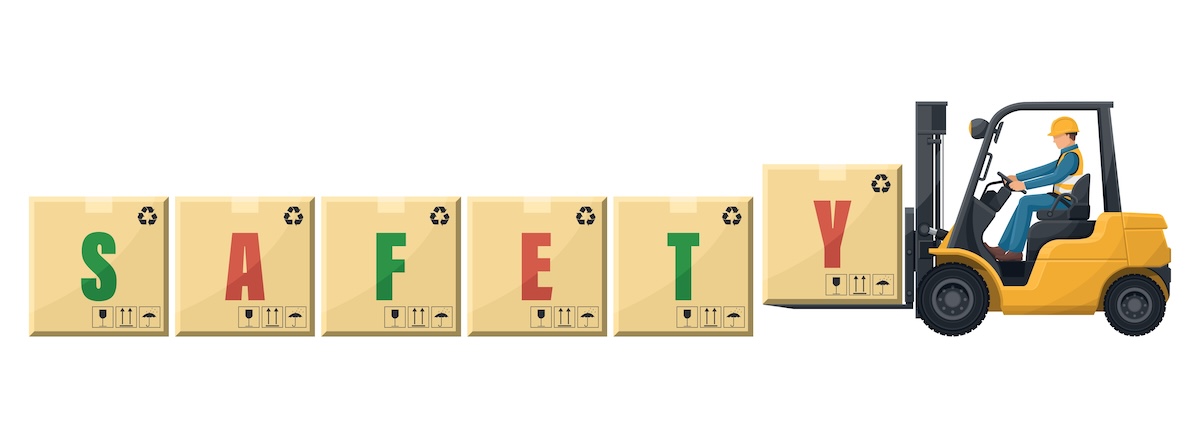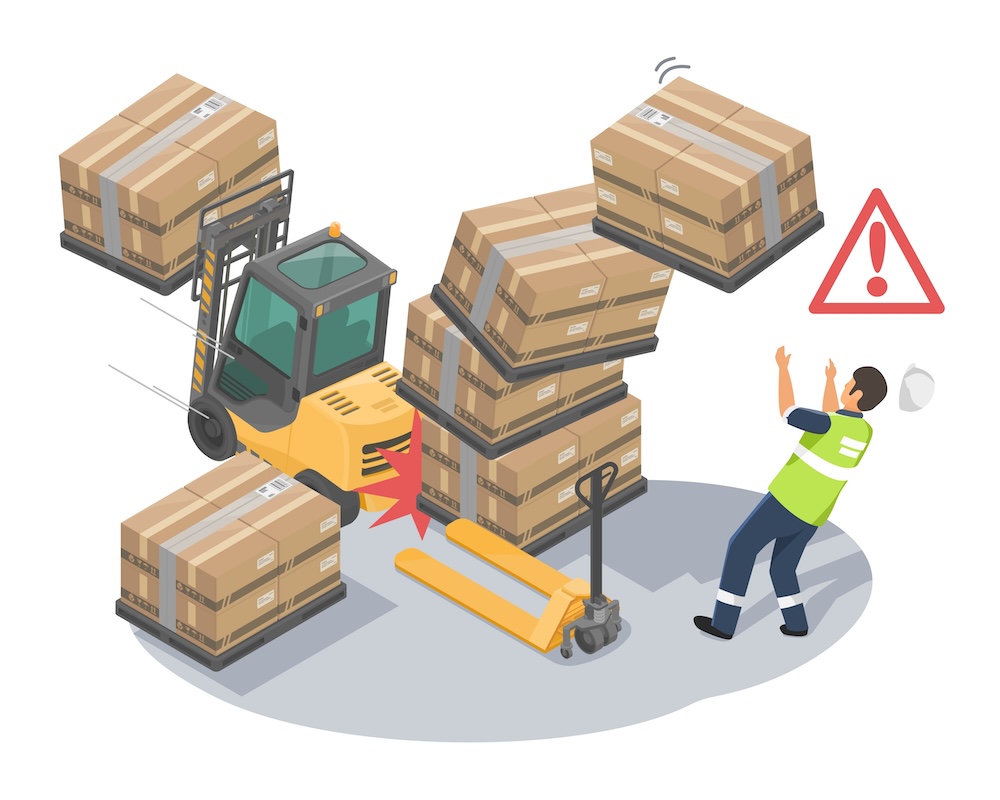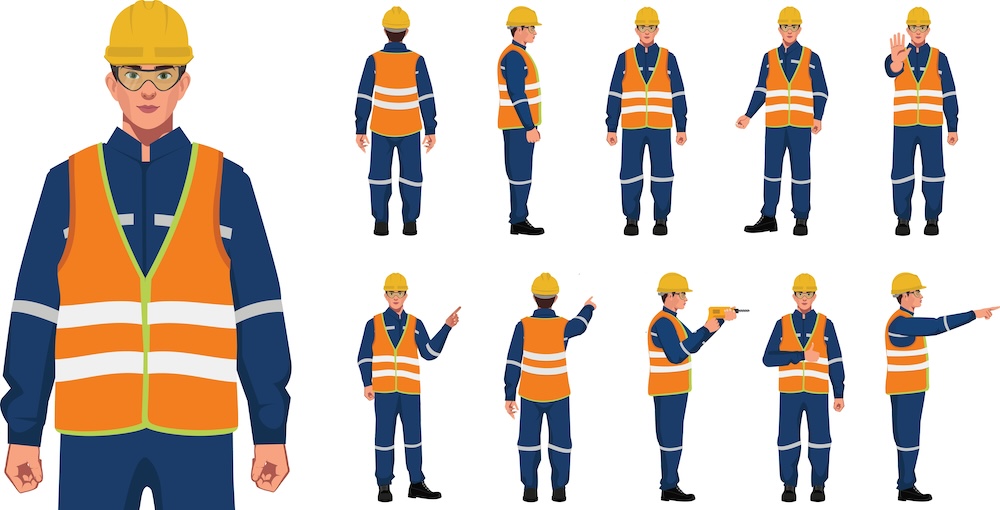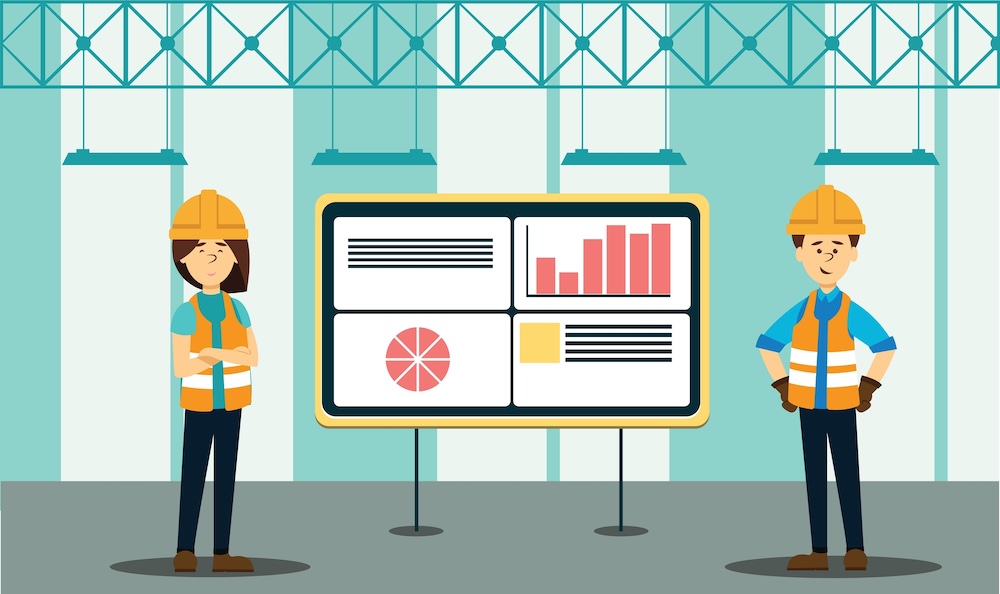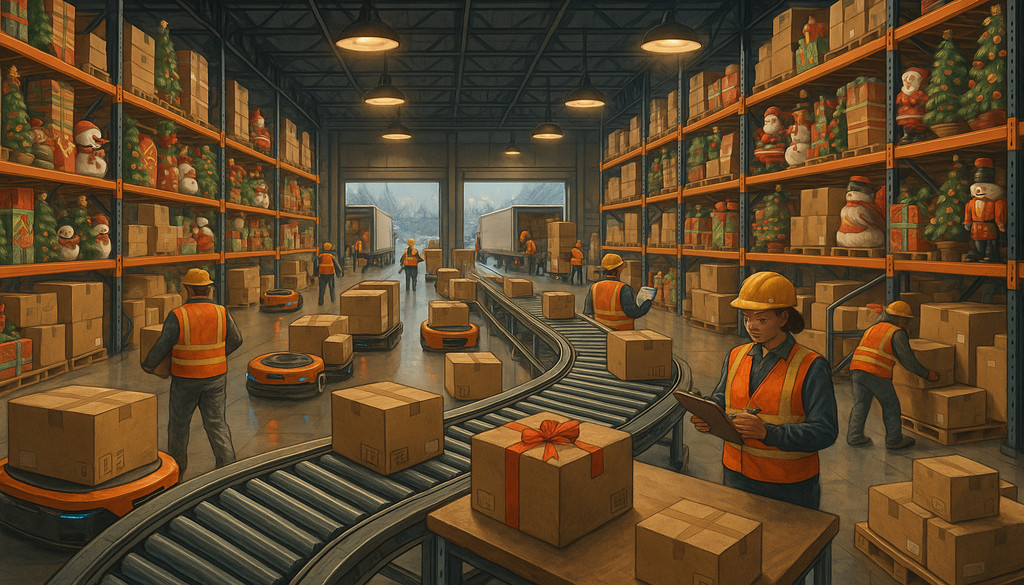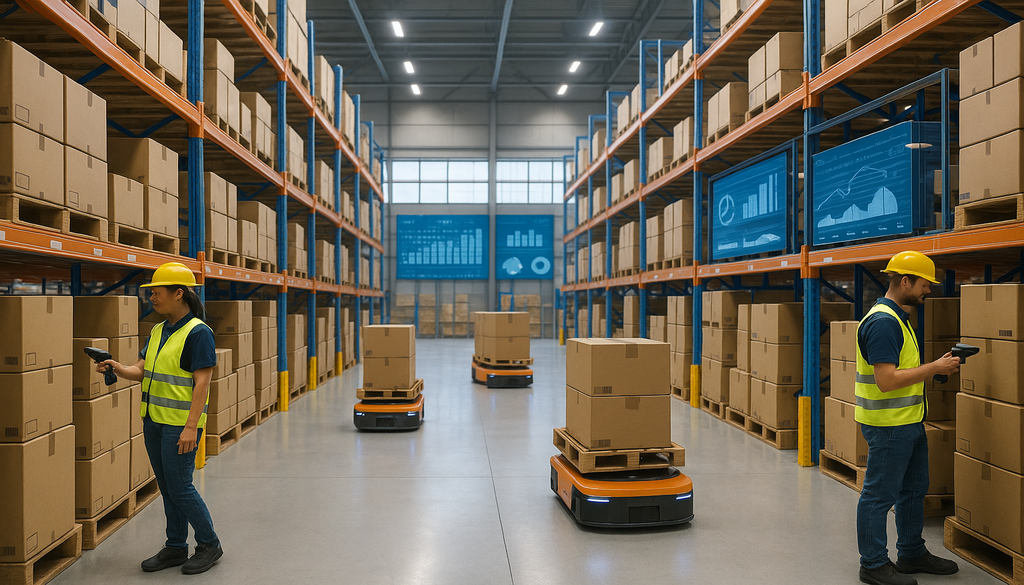Searching for effective ways to improve warehouse safety and prevent accidents? Look no further. This article cuts to the chase, offering actionable insights into identifying hazards, implementing safety measures, fostering a culture of safety, and complying with regulations to safeguard your warehouse operations.
Key Takeaways
- Warehouse safety is a critical concern with hazards like forklift accidents, slip and trip hazards, falling objects, manual lifting injuries, and hazardous material exposure requiring comprehensive safety measures and training.
- Implementing a safety-first culture is key to warehousing operations, emphasizing management commitment, employee engagement, regular safety audits, and the use of personal protective equipment (PPE) for reducing accidents.
- Technological advancements such as automated equipment, safety monitoring systems, and warehouse management systems (WMS), along with adherence to legal compliance and industry standards like OSHA and ANSI/ASSP, enhance overall warehouse safety.
Common Warehouse Safety Hazards
Safety in a warehouse is more than just a checklist; it’s a comprehensive approach that covers various potential hazards. From towering stacks of goods to bustling forklifts, warehouses are rife with potential dangers. Understanding these hazards is the first step towards creating a safer workplace. To help with this, consider implementing some warehouse safety tips to further enhance the safety of your employees and operations.
But what are these hazards, and how can they be mitigated? Let’s explore the most common warehouse safety hazards.
Forklift Accidents
Forklifts, also known as powered industrial trucks, while crucial for efficient warehouse operations, come with their own set of risks. Improper training, reckless driving, or even a momentary lapse of attention can turn these helpful machines into dangerous projectiles. In fact, forklift accidents are a frequent issue in distribution centers and can lead to serious injuries or even fatalities.
But can these accidents be prevented?
Slip and Trip Hazards
Imagine a warehouse worker busily performing their duties, only to suddenly lose their footing on a wet surface or stumble over an unattended pallet. Slip and trip hazards can occur anywhere in a warehouse, and they’re often the result of something as simple as poor housekeeping. Some common slip and trip hazards in warehouses include:
- Spilled merchandise
- Wet or icy surfaces
- Loose or uneven flooring
- Cluttered walkways
- Unattended pallets
These hazards, including electrical hazards and fire hazards, can create dangerous conditions that lead to injuries. It’s important to maintain a clean and organized warehouse to minimize the risk of slips and trips.
Falling Objects
Imagine walking through a warehouse aisle when suddenly, a box tumbles down from the towering stacks above. Falling objects can pose a serious risk to warehouse workers, resulting in injuries and even fatalities. Falling items in a warehouse can result in damaged goods, as well as potential injuries to anyone walking in the fall zone.
Manual Lifting Injuries
From boxes of goods to heavy machinery, manual lifting is a common task in a warehouse. However, without proper ergonomics and lifting techniques, these routine tasks can lead to serious injuries. In fact, ergonomic stresses can lead to serious or long-term incidents, including:
- Musculoskeletal injuries
- Strains and sprains
- Back and neck pain
- Hernias
- Disc injuries
It is important to prioritize safety and implement proper lifting techniques to prevent these injuries.
So, how can we protect workers from these manual lifting injuries?
Hazardous Material Exposure
In some warehouses, workers handle hazardous materials daily, exposing them to potential health risks. From chemicals that can cause burns to substances that can be harmful if inhaled, these materials pose a significant danger if not handled correctly. Hazard communication plays a vital role in ensuring that employees are aware of the risks associated with these materials. Correct storage and handling procedures for hazardous materials are crucial in minimizing the risk of exposure.
Implementing Warehouse Safety Measures
Knowing the potential hazards in a warehouse is the first step towards creating a safer workplace. But how do we tackle these hazards? The answer lies in implementing comprehensive warehouse safety measures. From providing safety training to ensuring emergency preparedness, various strategies can be employed to create a safer work environment.
Safety Training Programs
One of the most effective ways to ensure warehouse safety is through comprehensive warehouse safety training programs. These programs educate workers about potential hazards, teach them how to respond to emergencies, and provide guidelines for safe work practices. Detailed training is especially crucial for operating machinery like forklifts safely, managing hazardous substances spills, and using personal protective equipment correctly.
Personal Protective Equipment (PPE)
Personal Protective Equipment (PPE) serves as the first line of defense against many workplace hazards. From safety glasses and hard hats to steel-toed boots and suitable respirators, PPE plays a crucial role in protecting workers from injuries. But it’s not enough to just provide PPE; employees must be trained in its proper use and maintenance, and should be held accountable for wearing it consistently.
Emergency Preparedness
Accidents can happen at any time in a warehouse, which is why being prepared for emergencies is crucial. A comprehensive emergency response plan includes emergency procedures for a safe evacuation, measures to handle fire emergencies, and ensures that all workers are accounted for.
Regular Safety Inspections and Audits
Regular safety inspections and audits are vital in maintaining a safe warehouse environment. These inspections help identify potential hazards and areas for improvement, ensuring that the warehouse remains a safe place for all employees. From maintaining storage systems to inspecting ladders for defects, safety audits cover various aspects of warehouse operations.
Creating a Safety-First Culture
While safety measures and regulations are crucial, creating a safety-first culture within the warehouse is equally important. A safety-first culture means that every employee, from the warehouse floor to the executive office, prioritizes safety above all else. This culture is fostered through management commitment, employee engagement, and recognition and accountability.
Management Commitment
Management’s commitment plays an integral role in fostering a safety-first culture. Some ways that management can demonstrate their commitment to safety include:
- Prioritizing proper design and planning in warehouse operations.
- Investing resources in safety training for employees.
- Implementing safety technologies and equipment.
- Regularly reviewing and updating safety policies and procedures.
Management’s dedication to safety is a driving force behind creating and maintaining a safe warehouse environment.
Employee Engagement
Employee engagement is another pillar of a safety-first culture. When employees are actively involved in safety initiatives and feel comfortable communicating their safety concerns, they are more likely to adopt safe work practices. However, it’s important to remember that workplace stress and fatigue can contribute to increased injury rates, so maintaining a healthy work environment is crucial for workplace safety.
Recognition and Accountability
Recognition and accountability are key to maintaining a safety-first culture. By recognizing employees who adhere to safety procedures and holding them accountable for their actions, companies can encourage safe behaviors and ensure adherence to safety procedures. Regular safety drills, including fire and emergency evacuation drills, play a crucial role in this process.
Warehouse Safety Technologies
In the digital age, technology plays a pivotal role in enhancing warehouse safety. From automated equipment that takes over repetitive tasks to safety monitoring systems that enable quick response to potential hazards, technology has proven to be a game-changer in warehouse safety.
Automated Equipment
The implementation of automated equipment, like warehouse robots and AMRs, can significantly enhance safety in a warehouse. These technologies not only improve productivity but also reduce physical strain on human workers, thereby minimizing accident risks.
Safety Monitoring Systems
Safety monitoring systems are a crucial component of warehouse safety technologies. These systems, which include sensors, IoT devices, and advanced surveillance cameras, enable the quick detection and prompt response to potential hazards, thereby preventing accidents and ensuring worker safety.
Warehouse Management Systems
Warehouse management systems (WMS) play a vital role in optimizing warehouse operations and indirectly boosting safety. By streamlining operations like:
- receiving
- put-away
- picking
- shipping tasks
A WMS reduces opportunities for accidents. Furthermore, improved inventory accuracy and real-time stock updates minimize the chances of misplaced goods, reducing the likelihood of accidents.
Legal Compliance and Industry Standards
While implementing safety measures and fostering a safety-first culture are crucial, adhering to legal compliance and industry standards is equally important. Warehouses must comply with various regulations and standards, including OSHA regulations and ANSI/ASSP and NFPA standards, to ensure a safe work environment.
But what do these regulations and standards entail?
OSHA Regulations
OSHA, the Occupational Safety and Health Administration, sets regulations that govern warehouse safety. These regulations cover general industry standards, including:
- the handling of hazardous chemicals
- the use of personal protective equipment
- the maintenance of safe working conditions
- the training of employees on safety procedures
Warehouses are required to adhere to warehouse safety rules, including warehouse safety guidelines and the proper use of safety signs, to ensure the safety of their workers.
ANSI/ASSP and NFPA Standards
In addition to OSHA regulations, warehouses must also comply with ANSI/ASSP and NFPA standards. These standards provide guidelines for fall protection systems and fire safety measures, respectively. For instance, ANSI/ASSP Z359 outlines requirements for personal fall arrest systems, while NFPA 13 specifies the minimum design and installation requirements for fire sprinkler systems.
Summary
As we’ve seen, warehouse safety is a comprehensive undertaking that involves recognizing potential hazards, implementing safety measures, fostering a safety-first culture, leveraging technology, and adhering to legal compliance and industry standards. While the task may seem daunting, the benefits of creating a safe warehouse environment are immeasurable, from reducing accidents and injuries to boosting employee morale and productivity.
Enhance Warehouse Safety and Efficiency with SphereWMS
Want to improve safety and efficiency in your warehouse? SphereWMS can help streamline your operations, reduce risks, and improve overall safety with our advanced warehouse management system. Contact us today to learn how SphereWMS can optimize your business.
Frequently Asked Questions
Who has the right of way in warehouses?
In warehouses, pedestrians have the right of way according to OSHA regulations. Forklift operators must be cautious and yield to pedestrians, slowing down and using their horn at specific areas.
How to make a warehouse safe?
Here are some tips for making a warehouse safe: place equipment charging stations away from fire hazards, ensure clear and accessible corrugate and trash receptacles, eliminate blind spots with mirrors, and perform ergonomic analyses for tasks. This will help create a safer warehouse environment for everyone.
What are the OSHA guidelines for warehouse safety?
OSHA guidelines emphasize proper ventilation, using lockout/tag-out procedures, ensuring fall protection for heights over four feet, and keeping areas clear to prevent accidents. Regular safety training and proper equipment use are also key.
What are the common hazards in a warehouse?
The common hazards in a warehouse include forklift accidents, slip and trip hazards, falling objects, manual lifting injuries, and hazardous material exposure. Stay aware and take proper precautions to prevent accidents and injuries.
How can safety training programs enhance warehouse safety?
Safety training programs can enhance warehouse safety by educating workers on potential hazards, teaching them how to respond to emergencies, and providing guidelines for safe work practices. This helps to create a safer working environment for everyone involved.

